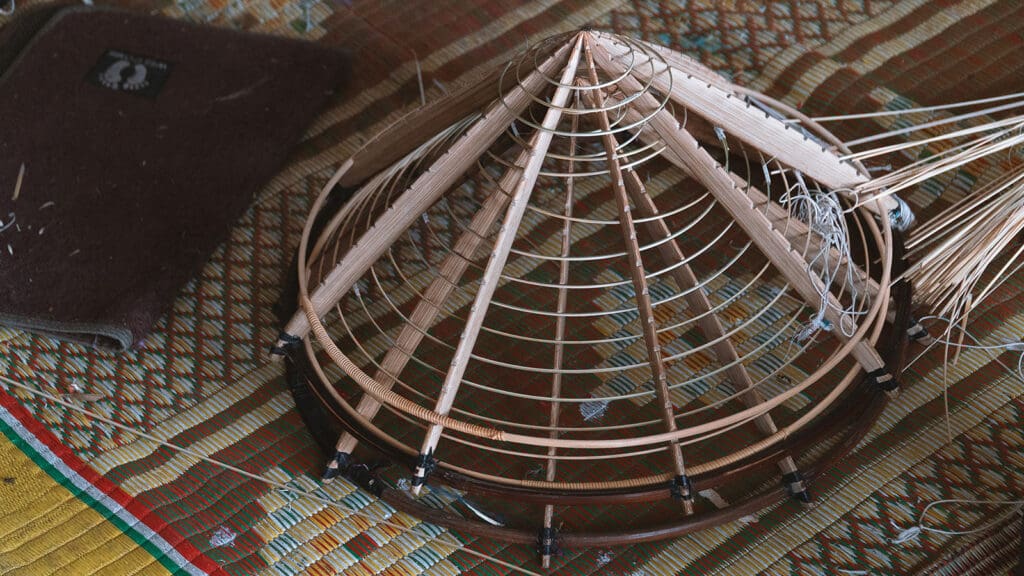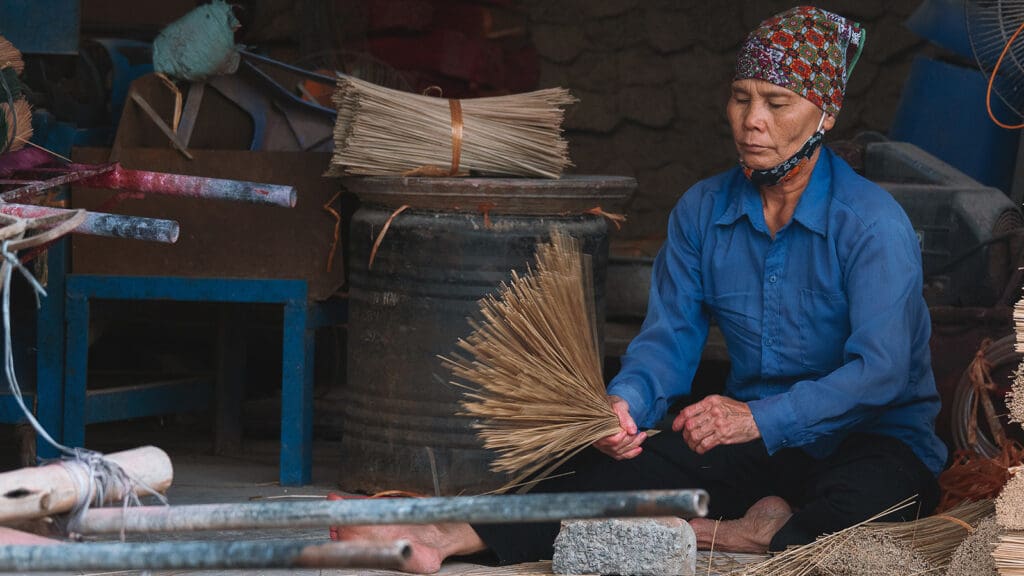During my stay in Hanoi, I was fascinated by some villages devoted to traditional handicrafts near the Vietnamese capital, about an hour’s drive from the city centre. Today, the livelihood of these villages is provided partly by the government to preserve the country’s cultural heritage and partly by the entrepreneurship of their inhabitants.
Ha Thai and its traditional lacquers
The first of these villages is Ha Thai, located about twenty kilometers south of Hanoi. Ha Thai is renowned for its delicate lacquer decorations on wood, mother of pearl, ceramics, bamboo, eggshells, and rattan, to name a few of the materials on which they are applied. The traditional colours are black, red, and brown, but today decorated items can also be found in blue, yellow, white, and green.
Visitors passing through Ha Thai can immerse themselves in the creativity of this tradition and learn more about the lacquering technique used by local artisans by participating in a workshop. A few hours between stencils and lacquer, at the end of which you can purchase your creation, thus contributing to the village’s livelihood.

Kui Hau and typical Vietnamese hats
The second village I visited was Kui Hau. Here local artisans specialize in making traditional Vietnamese cone-shaped hats, the Non La. These headdresses are made from inexpensive but durable natural materials such as, for example, palm or bamboo leaves.
Also in Kui Hau, local artisans involve visitors in the production of Non La, from making to decorating with silk or hand-painted. Under the guidance of a master, you have the opportunity to hand-paint a hat and buy it as a souvenir. An easy way to learn more about the local culture and help preserve it.

Quang Phu Cau and his colorful incenses
The third village I visited was Quang Phu Cau, about 35 kilometers from downtown Hanoi. Known for centuries for making aromatic incense sticks, Quang Fu Cau is now a large and colorful community of artisans dedicated to this production. Walking through its streets you can see thousands of these colorful sticks, left to dry in the sun.
Vietnam amazes me.
Not far from Quang Phu Cau is another piece of history. This is a house built in 1900 that miraculously survived the war, although it bears bomb marks on the walls. Here lives a lady over ninety years old with her daughter who takes care of her and the house.

